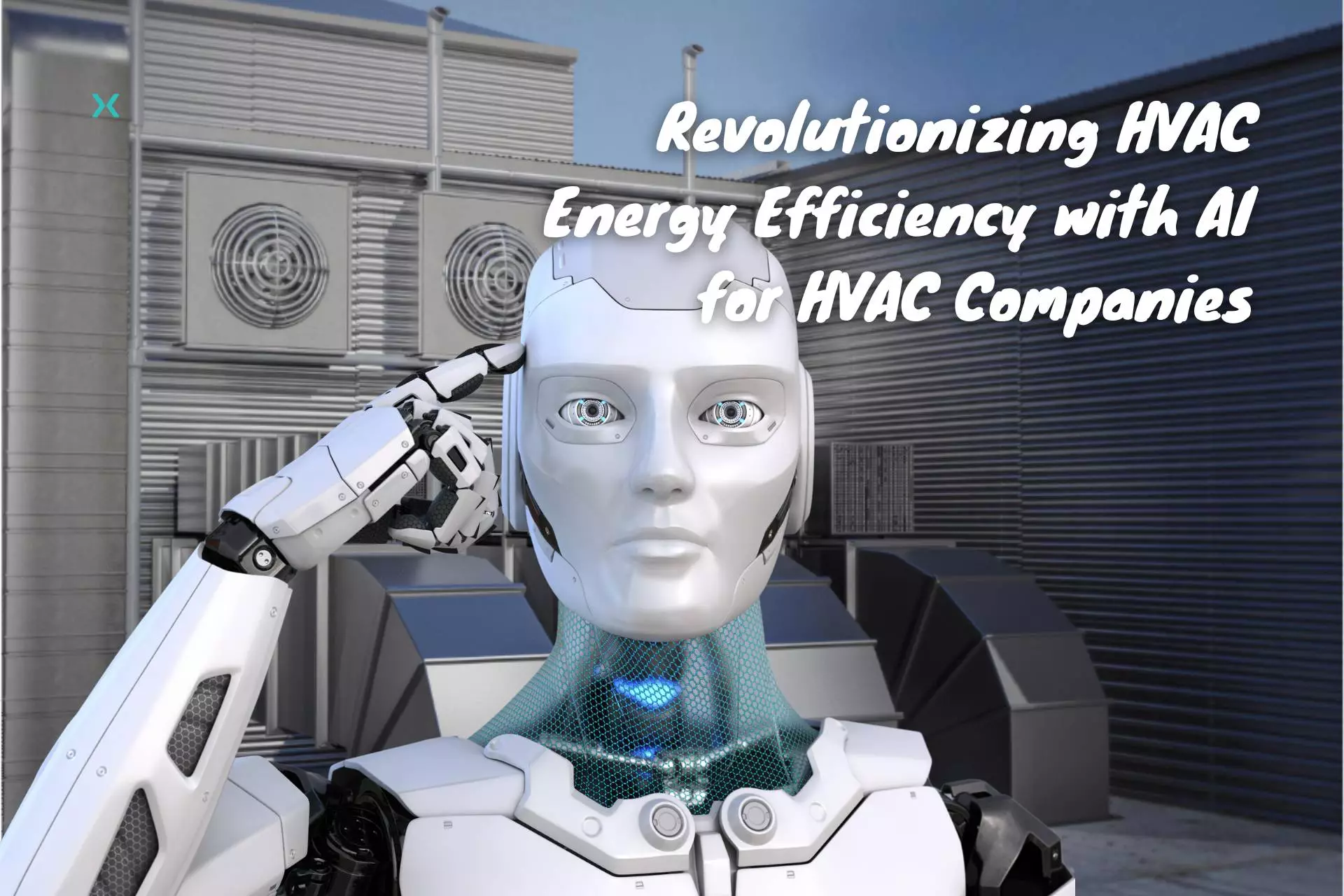🤖Revolutionizing HVAC Energy Efficiency with AI
As the world continues to battle the effects of climate change, reducing energy consumption has become a top priority for individuals, businesses, and governments alike.
One of the areas where energy consumption is most significant is in commercial buildings, which account for a large portion of global energy use.
Within these buildings, Heating, Ventilation, and Air Conditioning (HVAC) systems are responsible for a considerable amount of energy consumption.
Inefficiencies in these systems not only contribute to high energy bills but also have a significant impact on the environment.
Thankfully, technological advances, particularly in Artificial Intelligence (AI), have created opportunities for optimizing energy consumption in HVAC systems.
AI-based HVAC control can help minimize energy waste, improve system efficiency, save energy, and enhance building occupant comfort.
This technology can automatically adjust the temperature, humidity, and air quality to suit the building’s occupancy patterns and climate conditions, reducing the need for manual intervention.
This article will explore the challenges and limitations of traditional HVAC systems in office buildings, the benefits of integrating AI technology into these systems, and the potential for AI-powered HVAC control to improve energy efficiency in commercial buildings.
We will discuss how AI can help enhance the functionality of HVAC systems, simplify operations, and create a comfortable indoor environment while reducing energy consumption.
Furthermore, we will dive into how AI technology can be used in HVAC systems, including machine learning algorithms, intelligent controls, and autonomous systems.
We will also highlight the potential benefits of these approaches and set points such as improved energy efficiency, lower operating costs, and reduced carbon footprint.
Overall, this article aims to provide an in-depth analysis of how AI technology can revolutionize energy consumption in commercial buildings and contribute to a more sustainable, energy-efficient future.
Table of Contents
🤖 Introduction to HVAC & AI
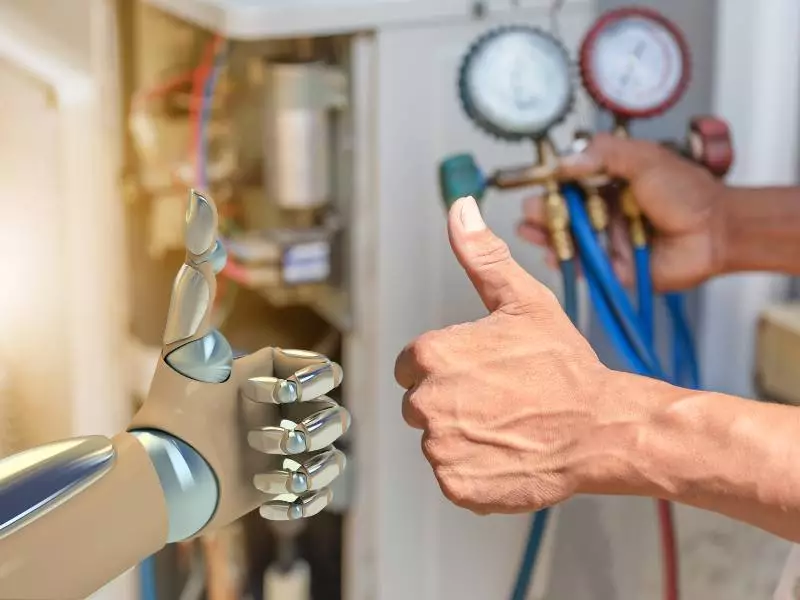
Artificial Intelligence (AI) technology advances provide exciting opportunities to optimize energy consumption in HVAC systems.
Integrating AI-based control in HVAC systems can automate energy usage, improving system efficiency and occupant comfort and reducing energy waste.
With machine learning algorithms, intelligent controls, and autonomous systems, HVAC systems can adjust temperature, humidity, and air quality to the building’s occupancy patterns and climate conditions.
This article will explore how integrating AI technology can revolutionize energy consumption in commercial facilities and create a more sustainable future.
What is HVAC (Heating, Ventilation, and Air Conditioning)?
HVAC stands for Heating, Ventilation, and Air Conditioning and refers to the technology and systems used to regulate building temperature, humidity, and air quality.
These systems are essential to modern buildings, as they provide comfort and regulate indoor air quality for occupants.
The systems are complex and can include heating and cooling units, air conditioners, ventilation systems, ductwork, and controls.
HVAC Systems Challenge – Control and Optimization
One of the significant challenges with HVAC systems is controlling and automating their functions efficiently.
Traditional HVAC systems are controlled manually or through basic timers, which can result in energy wastage and poor occupant comfort.
Inadequate automation also limits the ability of most HVAC equipment and systems to respond to changing occupancy patterns, weather conditions, and other variables.
Integrating AI technology in HVAC systems can help overcome these limitations, as AI can automate and optimize system functions in real-time.
However, there are still challenges and hurdles to integrating AI, such as accurate data collection, system integration, and cybersecurity.
Despite these challenges, AI-powered HVAC systems have the potential to revolutionize energy consumption in commercial buildings, resulting in lower energy bills and reduced carbon footprints while providing improved occupant comfort.
🤖 The Need for Energy Optimization in HVAC Systems
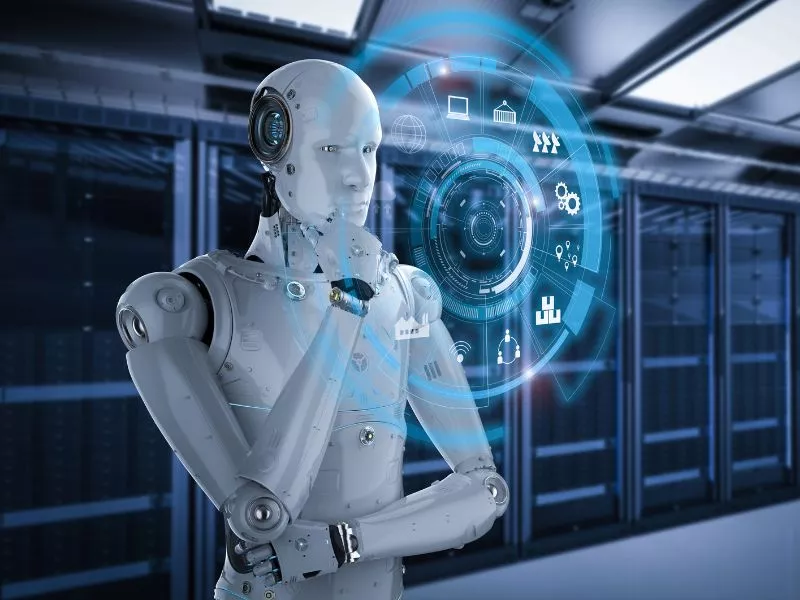
Energy optimization in HVAC systems is becoming increasingly crucial, as buildings account for a significant portion of global energy consumption.
HVAC systems are responsible for a considerable amount of energy use within facilities.
Optimizing energy consumption in HVAC systems can reduce energy bills, improve occupant comfort, and lower carbon footprints.
Integrating Artificial Intelligence in HVAC systems provides exciting opportunities for energy optimization by enabling real-time automation, efficient control, and intelligent decision-making.
With machine learning algorithms, cloud computing, and autonomous systems, HVAC systems can learn from past data and improve energy efficiency over time.
The need for energy optimization in HVAC systems is a critical step towards achieving sustainability and reducing the environmental impact of buildings.
Five Reasons Commercial Buildings Consume So Much Energy
- Poor Building Envelope: Commercial buildings with poor insulation, inefficient windows, or leaky roofs require more energy to regulate indoor temperature and humidity. The building envelope is the physical barrier between the interior and exterior of the building, and if it is not well-maintained, it can result in higher energy consumption.
- Inefficient Lighting: Commercial buildings often use outdated and inefficient lighting systems, such as fluorescent or incandescent bulbs. These lighting systems consume a lot of energy and generate considerable heat, which can further increase the building’s cooling load.
- Outdated HVAC Systems: Many commercial buildings still rely on obsolete HVAC systems, which lack energy efficiency features, such as variable speed drives, intelligent controls, and automation. These systems can result in energy wastage, high energy bills, and poor occupant comfort.
- Occupancy Patterns: Commercial buildings have varying occupancy patterns, and traditional HVAC systems are not designed to adjust to these patterns effectively. Inefficient systems can result in heating, cooling, and ventilating unoccupied spaces, leading to energy wastage.
- Lack of Energy Management Systems: Many commercial buildings lack proper energy management systems, resulting in unmonitored energy use and no way to track and reduce energy consumption. Without adequate energy management, it is challenging to identify inefficiencies in the building’s systems and address them effectively.
Addressing these reasons, smart ventilation can help reduce energy consumption and create more sustainable buildings.
Integrating AI-powered HVAC systems can also help address many of these challenges by providing intelligent automation and efficient control over building systems.
🤖 How AI Can Help Optimize HVAC Energy Consumption
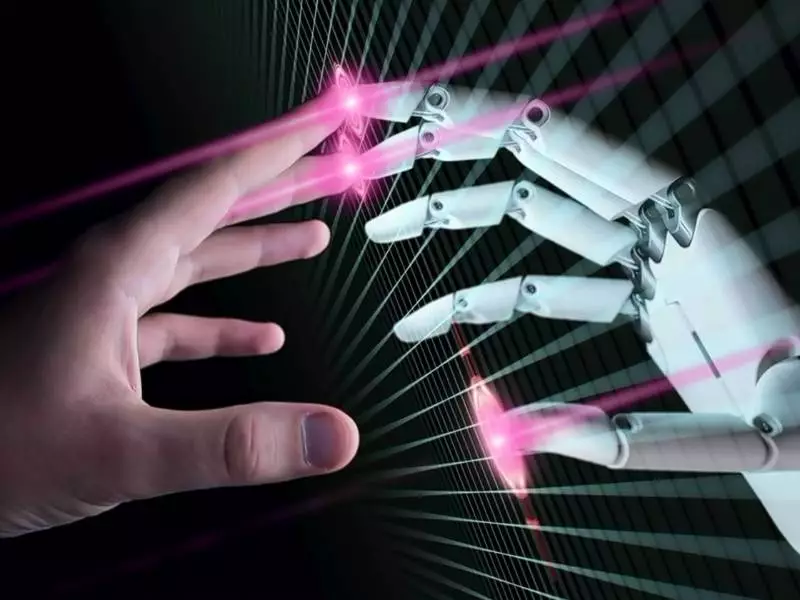
Here are some ways AI can help optimize your existing HVAC system for energy consumption:
- Intelligent Control and Automation: AI-powered HVAC systems can automate the regulation of temperature, humidity, and air quality in real time based on occupancy patterns, weather conditions, and other variables. With intelligent controls and machine learning algorithms, HVAC systems can adjust their operations to optimize energy usage and reduce wastage.
- Predictive Maintenance: AI-powered HVAC systems can detect and predict maintenance issues before they become costly problems. HVAC systems can predict failures, optimize performance, and reduce downtime by analyzing sensor data and other sources.
- Energy Consumption Analytics: AI-powered analytics can provide insights into energy usage patterns, identifying areas where energy consumption can be reduced. HVAC systems can use these insights to optimize operations and reduce energy consumption.
- Improved Occupant Comfort: AI-powered HVAC systems can learn occupant preferences and adjust their operations to provide optimal comfort while minimizing energy usage. Intelligent systems can detect changes in occupancy and adjust their settings accordingly, ensuring that energy is not wasted on unoccupied spaces.
- Efficient System Integration: AI can integrate with other building systems, such as lighting and security, to optimize energy consumption further. For example, AI can coordinate lighting and HVAC systems to ensure that unoccupied spaces are not heated, cooled, or lit unnecessarily.
AI-powered HVAC systems can optimize energy consumption, reduce energy costs further, and improve occupant comfort.
Integrating AI technology in commercial buildings can provide sustainable solutions to energy consumption challenges while ensuring a comfortable environment for building occupants.
AI-Based HVAC Control Explained
AI-based HVAC control integrates AI technology in HVACR systems to optimize energy consumption, reduce costs, and improve occupant comfort.
AI-based HVAC remote control systems use machine learning algorithms and predictive analytics to learn from past data and adjust system operations in real-time based on occupancy patterns, weather conditions, environmental parameter changes, and other variables.
With intelligent control and automation, AI-based HVAC systems can regulate temperature, humidity, outdoor airflow, and air quality in real-time, ensuring optimal comfort and human productivity for building occupants while minimizing energy usage.
Predictive maintenance algorithms can detect and predict maintenance issues before they become costly problems, optimizing performance and reducing downtime.
AI-based HVAC systems can also provide an energy efficiency manager through consumption analytics, identifying areas where energy consumption can be reduced and optimizing system operations accordingly.
AI-based HVAC systems can optimize energy consumption and reduce costs by integrating with other building systems, such as lighting and security.
Smart Controls for HVAC Systems – Powered by AI
AI technology can power smart controls, enabling real-time adjustments and efficient control of building systems.
Smart controls use AI algorithms to learn from past data and adjust system operations based on occupancy patterns, weather, building conditions, outdoor temperature, and other variables.
Here are some ways AI can power smart controls for HVAC systems:
- Real-time Adjustments: AI-powered smart controls can automatically adjust the real-time temperature, humidity, and air quality settings based on occupancy patterns and other variables. This ensures optimal comfort for building occupants while minimizing energy usage.
- Predictive Maintenance: AI-powered smart controls can predict maintenance issues before they become costly problems, optimizing system performance and reducing downtime. By analyzing data from sensors and other sources, smart controls can identify problems and alert building managers before they become critical.
- Energy Consumption Analytics: AI-powered smart controls can provide insights into energy usage patterns, identifying areas where energy consumption can be reduced. This information allows HVAC systems to optimize operations and reduce energy consumption.
- Integration with Other Building Systems: AI can integrate with other building systems, such as lighting and security, to optimize energy consumption further. For example, smart controls can coordinate lighting and HVAC systems to ensure unoccupied spaces are not unnecessarily heated, cooled, or lit.
Challenges and Limitations of AI-Integrated HVAC Systems
Although AI-integrated HVAC systems offer a promising solution for optimizing energy consumption and reducing costs, some challenges and limitations still need to be addressed.
Here are some of the key challenges and constraints of AI-integrated HVAC systems:
- Data Quality: The effectiveness of AI algorithms depends on the data quality used to train them. Inaccurate or incomplete data can lead to inaccurate predictions and suboptimal system operations.
- System Complexity: Integrating AI technology with HVAC systems can add complexity to the system, making it harder to design, install, and maintain. This complexity can lead to higher costs, longer installation times, and increased maintenance requirements.
- Limited Compatibility: Not all HVAC systems are compatible with AI technology, and retrofitting older systems can be challenging and costly. This can limit the ability of some buildings to benefit from AI-integrated HVAC systems.
- Regulatory Compliance: Building codes and regulations can limit the use of certain AI technologies, making it harder to implement them in some buildings.
- Cybersecurity: As with any connected technology, AI-integrated HVAC systems are vulnerable to cybersecurity threats like hacking and data breaches. This requires robust cybersecurity measures to protect building systems and occupants.
- Cost: Implementing AI-integrated HVAC systems can require a significant upfront investment, which may challenge some building owners and managers.
While these challenges and limitations are significant, they can be addressed through careful planning, design, and implementation of smart systems.
Building owners and managers should work with experienced professionals to design and implement AI-integrated HVAC systems that address these challenges while maximizing the benefits of AI technology.
By doing so, they can achieve significant energy savings, reduce costs, and improve occupant comfort.
🤖 Benefits of AI-Integrated HVAC Systems
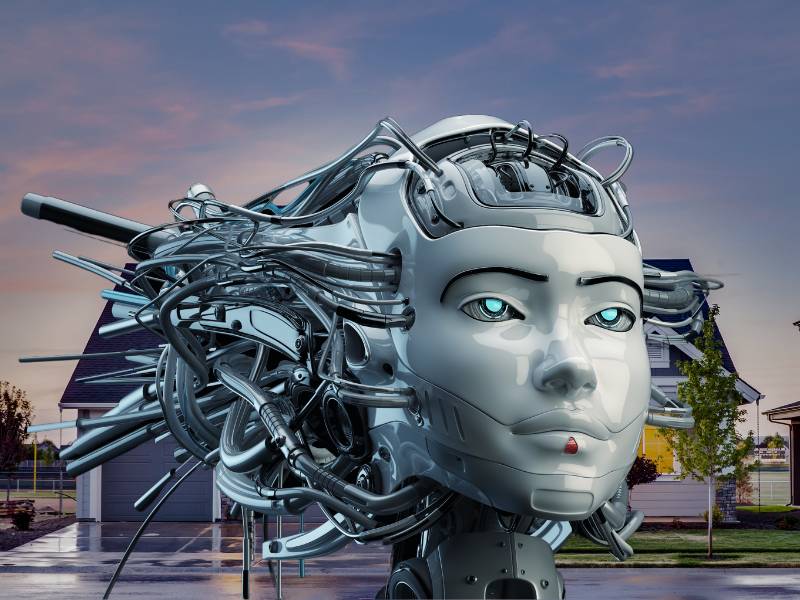
AI-integrated HVAC systems have gained popularity in recent years due to their ability to optimize energy consumption, enhance comfort, and improve indoor air quality.
Here are some of the benefits of AI-integrated HVAC systems:
- Energy Efficiency: AI algorithms can analyze real-time data such as occupancy patterns, weather forecasts, and building orientation to optimize the HVAC system’s performance, thereby reducing energy consumption and costs.
- Improved Indoor Air Quality: AI algorithms can monitor indoor air quality and adjust the HVAC system to maintain a healthy and comfortable indoor environment. The system can also detect and alert building occupants about air quality issues, such as high CO2 levels, allowing them to take appropriate measures.
- Predictive Maintenance: AI algorithms can analyze HVAC system data and detect potential faults before they occur, allowing for preventive maintenance, which reduces downtime and repair costs.
- Personalized Comfort: AI algorithms can analyze individual preferences and adjust the HVAC system to provide customized comfort to building occupants.
- Integration with Other Building Systems: AI-integrated HVAC systems can be integrated with other building systems, such as lighting and security, to enhance building performance and reduce energy consumption.
- Real-Time Monitoring and Control: AI algorithms can provide real-time monitoring and control of HVAC system performance, allowing building managers to make informed decisions about energy usage and comfort levels.
- Reduced Carbon Footprint: AI-integrated HVAC systems can help reduce a building’s carbon footprint by optimizing energy consumption, contributing to a more sustainable environment.
Finally!

AI-integrated HVAC systems offer numerous benefits, including increased energy efficiency, improved indoor air quality, personalized comfort, predictive maintenance, and reduced carbon footprint.
These systems are becoming increasingly popular in commercial and residential buildings because they enhance building performance and reduce costs.
To learn more about the HVAC industry, you should check out the HVAC section of our blog.

